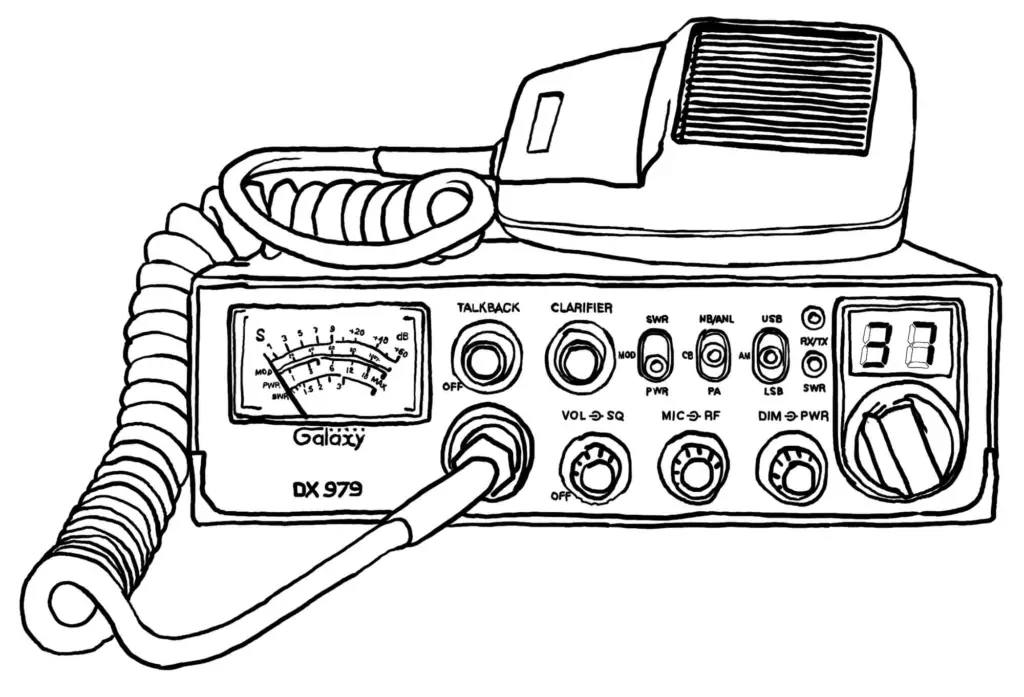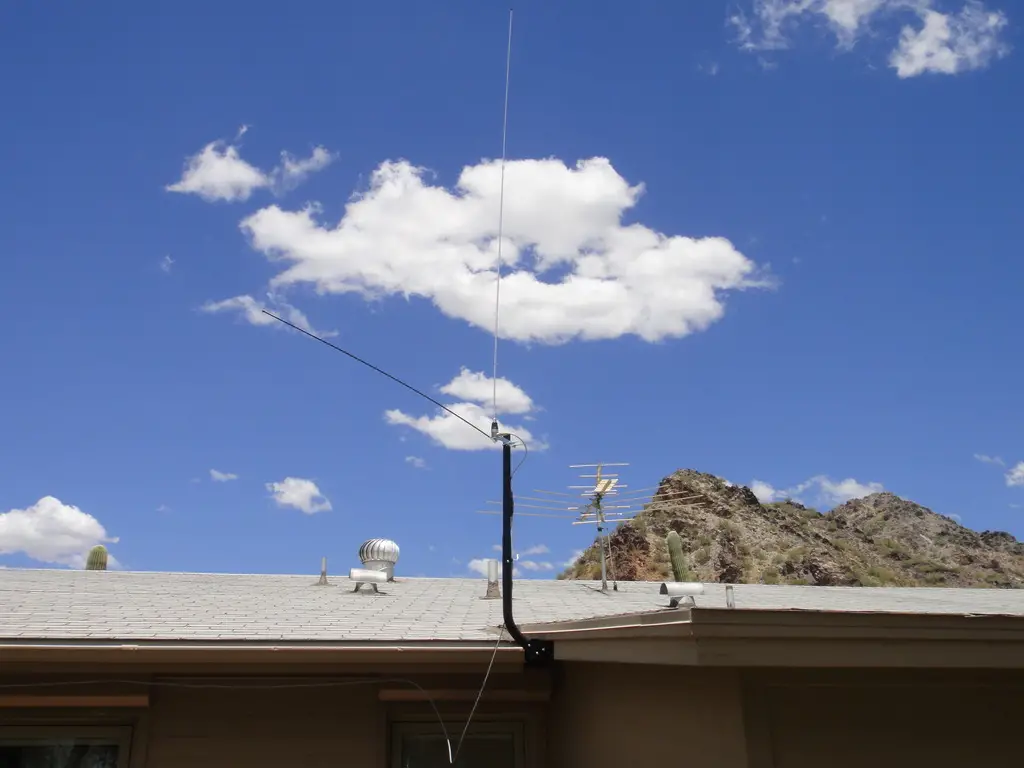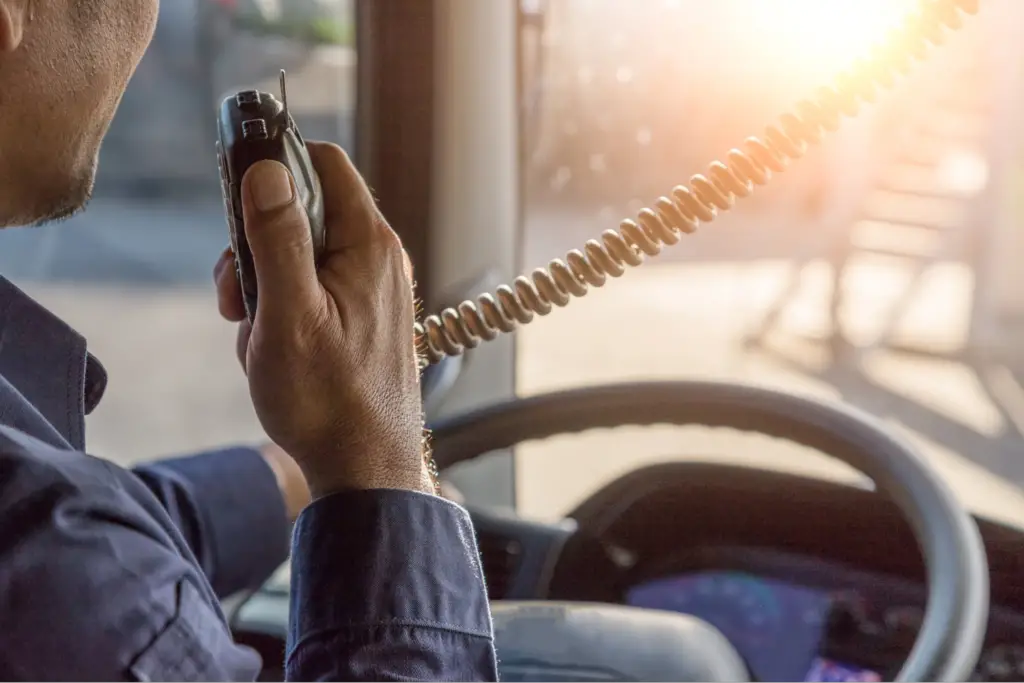CB radios have long been a popular means of communication for truckers, off-roaders, and outdoor enthusiasts. One of the popular inquiries about them is, How far will CB radio transmit per watt?
A CB radio’s range will increase by 0.5 to 6 milesper watt as the signal power output increases. But this is mostly in theory because the range of the CB radio is affected by the wattage by only a small amount. What impacts the range of a CB radio is the antenna height, antenna gain, terrain, coax loss, receiver sensitivity, etc.
In this article, we will explore the variables that can impact the range of CB radio transmission per watt. Also, we will provide insights on how to maximize the effectiveness of your CB radio communication.
How Far Will CB Radio Transmit Per Watt?
Signal strength, which is measured by watts, is a crucial factor in determining the distance a radio can communicate. The strength of the signal determines how much it can withstand weakening as it passes through obstacles. A higher signal strength means that the radio waves can travel farther.

To put it simply, it denotes the strength of the signal that can penetrate through obstacles such as buildings and trees with less attenuation. This translates to better clarity and range of communication.
Commercial radio stations have high power outputs, ranging from 50,000 to 100,000 watts. In contrast, handheld two-way radios typically use between 1/2 to 5 watts.
Each radio type has a maximum wattage limit set by the Federal Communications Commission (FCC). Unlicensed radios such as FRS radios are limited to 1/2 watts, MURS 2 watts, CB radios 4 watts, and SSB radios can have 12 watts.
Handheld radios, including marine, aviation, and licensed land-based radios such as LMR, Ham, and GRMS, are limited to 5 watts.
Here is a table showing the average range of CB radios per watt-
| Wattage | Free Space | Suburb | City |
| 0.5 | 0.5-2 miles | 0.5-1.5 miles | 0.25-0.5 miles |
| 1 | 2-3 miles | 1-2 miles | 0.5-1.25 miles |
| 2 | 3-4 miles | 1.5-2.5 miles | 1-1.5 miles |
| 4 | 4-6 miles | 2.5-4.5 miles | 1.5-3 miles |
This is just an approximate range based on signal strength. In reality, the range of the CB radio also depends on other things.
Other Factors that Contribute to CB Radio Range
While signal output has an impact on the CB radio range, it does not change the range significantly. There are other factors that leave a much bigger impact on the range of your CB radio.
Antenna Height:
The higher the antenna height, the farther the signal can travel before it encounters obstacles. This is because the signal can travel over and around the obstacles instead of having to penetrate through them. The height of the antenna also affects the radio’s line of sight, which is the direct path between the transmitting and receiving antennas.

For example, if you have two CB radios, one with an antenna mounted on the roof of a building and the other with an antenna mounted on a car, the CB radio with the rooftop antenna will have a longer range. This is because the rooftop antenna is higher, and the signal can travel over and around obstacles such as buildings and trees.
Antenna Gain:
Antenna gain refers to the measure of an antenna’s ability to direct radio waves in a specific direction compared to an isotropic antenna. An isotropic antenna is a theoretical antenna that radiates energy equally in all directions, while a directional antenna concentrates its energy in a specific direction.
Antennas with higher gain can concentrate their energy into a narrower beam, resulting in a longer range. This means that a directional antenna with a higher gain will be able to transmit and receive signals more efficiently and at a greater distance than an omnidirectional antenna.
For example, if two CB radios are located a long distance apart, a directional antenna with high gain can be used to transmit the signal directed toward the other radio, resulting in a clearer and stronger signal.
In contrast, an omnidirectional antenna would transmit the signal in all directions, including directions where the signal is not needed, leading to a weaker signal.
Receiver Sensitivity:
Receiver sensitivity is a crucial factor in determining the range of a CB radio because it affects the radio’s ability to pick up weak signals. A radio with high receiver sensitivity can detect signals that are weaker than those that a radio with lower sensitivity can detect.
In practical terms, this means that a CB radio with higher receiver sensitivity can pick up weaker signals from a longer distance. This is because the radio can detect signals that are weaker due to distance or obstacles that may be blocking the signal path.
For example, imagine two CB radios, one with high receiver sensitivity and one with low sensitivity, placed in a similar location. The high-sensitivity radio can pick up weaker signals from a long distance, while the low-sensitivity radio may not detect those signals at all. As a result, the high-sensitivity radio can communicate over a longer range than the low-sensitivity radio.
Total Coax Loss:
Total coax loss refers to the reduction in signal strength that occurs as a signal travels through the coaxial cable connecting the antenna to the CB radio. This reduction in signal strength is due to the resistance of the cable, which increases with the length of the cable.
As the signal travels through the coaxial cable, it encounters resistance, which causes the signal to weaken or attenuate. The longer the cable, the more resistance it has, and the greater the attenuation of the signal. This results in a weaker signal reaching the CB radio, which can limit the range of communication.
Therefore, the total coax loss is a crucial factor in determining the range of a CB radio. To minimize coax loss and maximize signal strength, it is important to use high-quality coaxial cable and keep the cable as short as possible. Additionally, proper installation and maintenance of the cable, such as ensuring proper connections and avoiding damage, can also help to minimize coax loss and improve signal strength.
Terrain:
The terrain is a critical factor that affects the range of a CB radio because radio waves can be obstructed or blocked by natural and man-made obstacles. Mountains, hills, buildings, and other structures can create a barrier that obstructs or reflects radio waves, leading to a weaker signal and a shorter range.
For example, if you are in a valley surrounded by mountains, the range of your CB radio may be limited because the mountains obstruct the radio waves, preventing them from reaching your radio or causing them to reflect away from your radio. Similarly, if you are in a densely populated urban area with tall buildings, the range of your CB radio may be limited due to the obstruction caused by the buildings.
On the other hand, open areas with fewer obstructions provide a clearer signal and longer range. For example, if you are in an open field or on top of a hill, you may be able to communicate over a longer range because the signal can travel without being obstructed by obstacles.
Apart from all these, a good-quality radio and regular maintenance are also important. Without proper care, your radio will not transmit.

How to Calculate CB Radio Range Using Antenna Height
If you know your antenna height, you can use it to calculate the antenna height with a simple formula. So, the formula is-
Antenna Horizon = 3.569 x √Antenna Height (in meters)
For example, if your antenna height is 6 feet and it’s 2 feet off the ground, then the total antenna height is 8 feet. To convert it to meter, you will need to divide it by 3.281, which would be 2.4384.
So, the distance would be, 3.569 x √2.4384 = 5.58 km. Now if you want you can convert it to miles, which would be around 3.5 miles.
Tips to Increase Your CB Radio Range
If you think you are not getting enough range on your CB radio and you need more, here are some tips to get the maximum potential range from your CB radio-
- Use the “Monitor” function on your radio to listen for weak signals when you’re at the edge of your communication range.
- Increase your height by standing on something or walking up a hill to get a clearer signal. Even a small increase in height can make a big difference.
- Set your radio to high power mode if it has multiple. For example, Uniden Bearcat has multiple mods.
- Use a whip antenna instead of a stubby one, and mount it as high as possible in a vertical position on your vehicle.
- Ensure your battery is fully charged as radio signals weaken when the battery is low.
- If the range is critical, opt for a mobile radio which can have 3-4 times the range of a handheld radio.
- Consider installing a repeater that can receive and “re-broadcast” signals, extending their range.
Frequently Asked Questions (FAQs):
Are CB radios VHF or UHF?
CB radios operate in the High Frequency (HF) portion of the radio spectrum, between 26.965 and 27.405 megahertz (MHz), which is also considered part of the Ultra High Frequency (UHF) band. Therefore, CB radios can be considered both UHF and HF radios.
Why are CB radios limited to 4 watts?
CB radios are limited to 4 watts of output power by the FCC to prevent interference with other devices. For example, emergency communication radios, broadcast television, and other communications systems operating in nearby frequency ranges. Additionally, CB radios are designed for short-range communication, and higher power would not significantly increase their range due to the limitations of the radio wave propagation at these frequencies.
What is the CB frequency range?
The CB frequency range is between 26.965 MHz and 27.405 MHz, and it is authorized for 40 channels. The CB Service offers short-distance communication for individuals and businesses, while similar services such as the General Mobile Radio Service (GMRS) are also available.
Conclusion
Based on the discussion, it is clear that the range of CB radio transmission per watt is a complex issue with many variables to consider. While wattage can impact range, it is not the only factor.
To determine how far a CB radio will transmit per watt, it is important to consider terrain, antenna height, weather conditions, and radio quality. By understanding these factors, CB radio users can better understand the capabilities of their radios and communicate effectively over long distances.